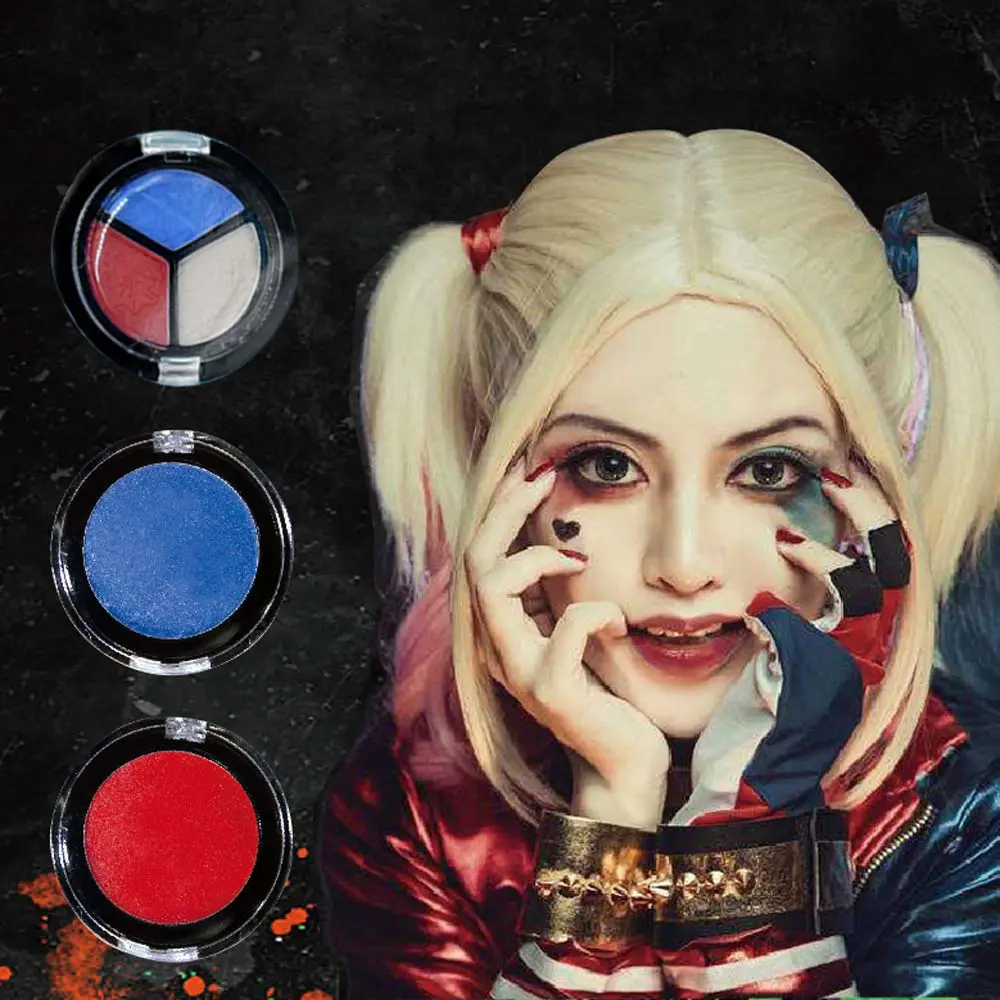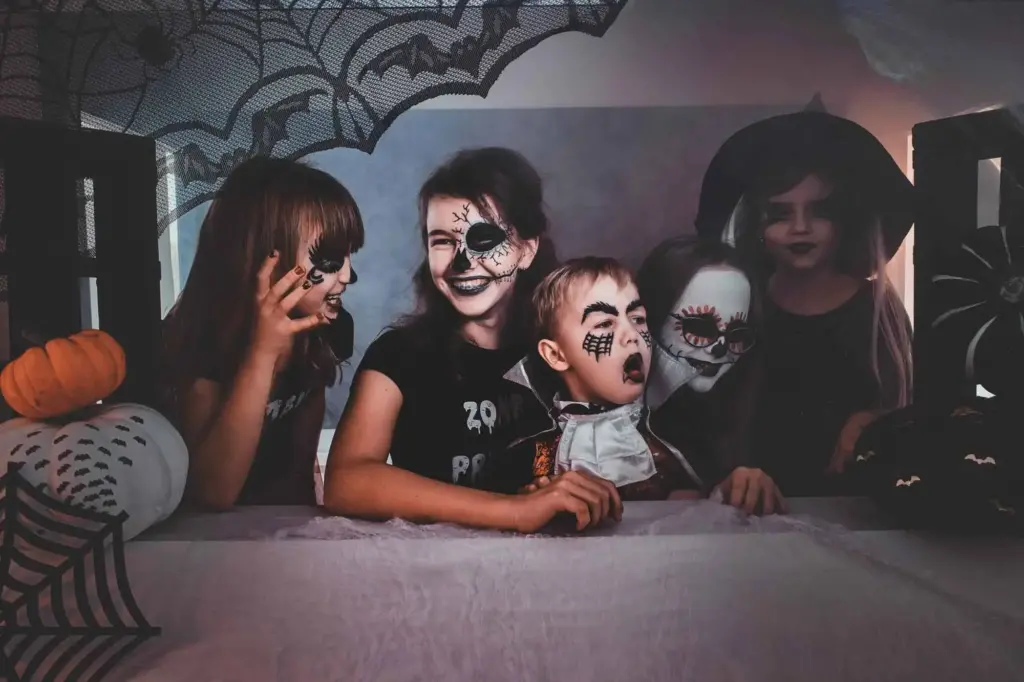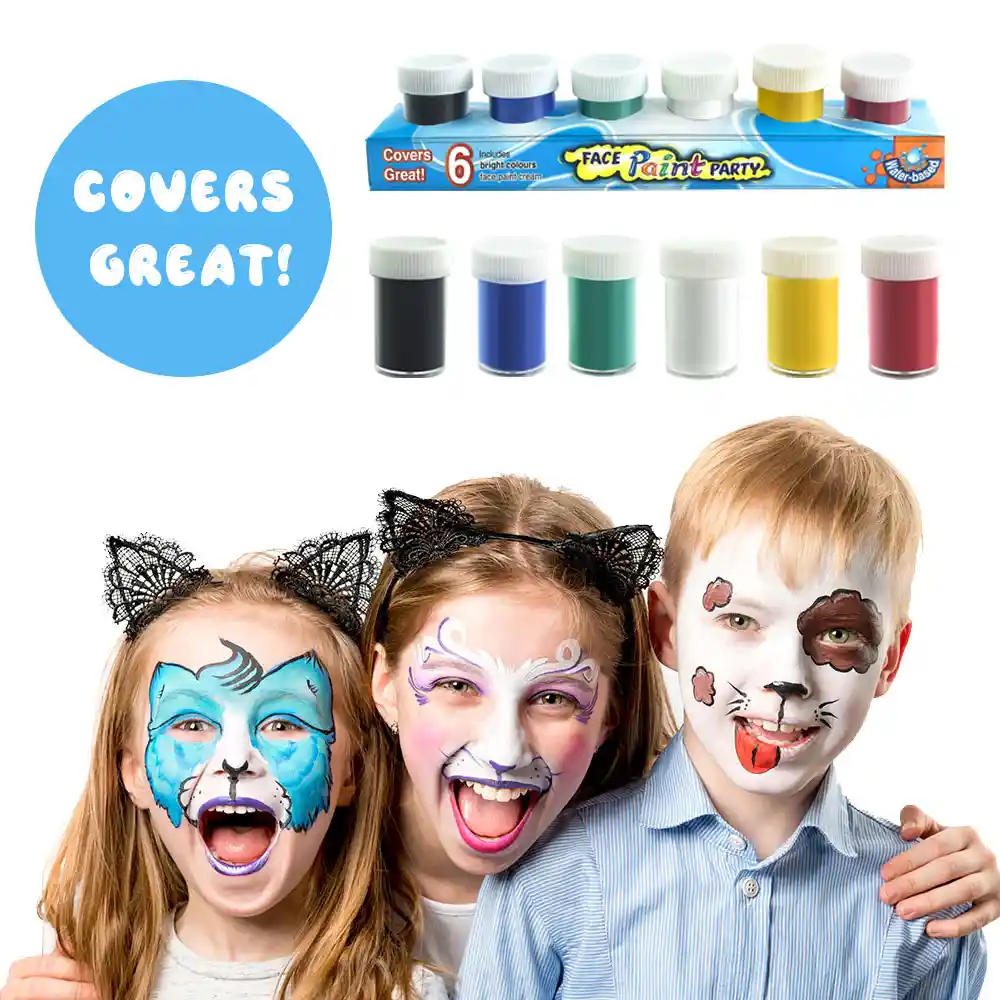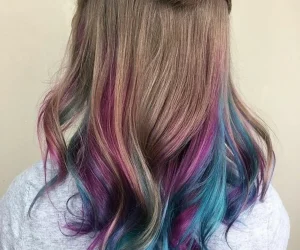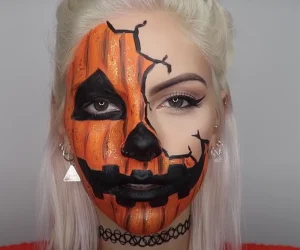How to make Halloween makeup last all day?
Table of Contents
Halloween makeup faces unique challenges compared to everyday cosmetics. It needs to survive hours of fun, often in tricky conditions. From sweating to outdoor weather, many factors threaten its durability.
Common Reasons Makeup Fades Quickly on Halloween
One main reason makeup fades is constant touching or rubbing, especially by kids or during active events. Another cause is the natural oils produced by our skin, which break down pigments and cause smudging. Plus, cheaper or low-quality products often lack staying power.
How Sweat, Oil, and Weather Affect Makeup Durability
Sweat is a major enemy of Halloween makeup. When the body heats up, sweat mixes with makeup and can cause it to run or blur. Oily skin also breaks down products faster. Outdoor weather adds another layer of challenge: rain, wind, or humidity can wash away or dissolve face paint and makeup.
Differences Between Everyday and Halloween Makeup Longevity
Everyday makeup is designed for normal wear, usually lasting a few hours in mild conditions. Halloween makeup must endure longer, heavier application, and tougher environments. It often uses stronger pigments and setting products, but even then, it requires special care to stay intact all day.
Preparing Your Skin for All-Day Halloween Makeup Success
Good Halloween makeup starts with a well-prepped canvas. Proper skin preparation ensures makeup adheres better and lasts longer, even through sweat and movement.
Cleansing and Moisturizing Before Application
Start by thoroughly cleansing the face to remove dirt, oils, and leftover products. Clean skin allows makeup to bond evenly. After cleansing, apply a lightweight, non-greasy moisturizer to hydrate without causing excess shine. Well-moisturized skin prevents dryness that can cause makeup to crack or flake.
Importance of Using a Primer for Longevity
A primer acts like a grip between your skin and makeup. It smooths pores and creates a barrier that holds makeup in place for hours. For Halloween makeup, choose primers designed for your skin type—mattifying primers for oily skin or hydrating ones for dry skin—to maximize wear and comfort.
Selecting the Right Base for Your Skin Type
Choosing the right foundation or base is key. Those with oily skin benefit from oil-free or powder-based bases, while dry skin types should opt for creamy or liquid formulas with moisturizing properties. Matching your base to your skin type ensures your Halloween makeup doesn’t fade prematurely.
Choosing the Best Makeup Products for Long Wear
Selecting the right products plays a huge role in how long your Halloween makeup lasts. Knowing the difference between formulas helps you pick makeup that withstands hours of wear.
Water-Based vs. Oil-Based Formulas for Halloween Makeup
Water-based makeup is lightweight and easy to remove, but it may not hold up well under sweat or humidity. Oil-based formulas offer stronger adhesion and durability, especially for detailed or bold looks, but can feel heavier on the skin.
Smudge-Proof and Waterproof Products Explained
Look for smudge-proof and waterproof labels to resist rubbing and moisture. Waterproof mascaras, eyeliners, and face paints are designed to stay put during sweat or tears, making them ideal for Halloween parties or outdoor events.
Safe Face Paints and Cosmetic-Grade Pigments
Always use face paints and pigments specifically formulated for skin. Cosmetic-grade pigments are tested for safety and less likely to cause irritation. Avoid craft paints or markers, which can be harmful and are not designed for facial use.
Application Techniques to Extend Halloween Makeup Wear
A flawless Halloween look is only half the battle—technique matters just as much as product choice. Applying your makeup with longevity in mind makes a major difference.
Layering and Setting Each Step Properly
Start with thin layers and build up gradually. Layering allows products to dry between steps, creating a stronger bond and minimizing smudging. After applying foundation or face paint, set each layer with a translucent powder before continuing. This layering-and-setting rhythm locks everything in place.
Using Brushes, Sponges, and Tools for Precision and Durability
The right tools help apply product evenly and securely. Brushes are ideal for powders and details, sponges help blend cream products seamlessly, and silicone applicators prevent absorption and waste. Clean tools also reduce the risk of bacteria, which can break down makeup faster.
Avoiding Over-Application to Prevent Cracking
While it’s tempting to pile on the paint, heavy layers can dry unevenly and crack with facial movement. Stick to thin, even coats—especially on areas like the forehead and mouth. If you need bold pigment, layer lightly and seal each layer properly.
Setting and Sealing Halloween Makeup for Maximum Durability
Even the best makeup won’t last all day without proper sealing. Setting and sealing transforms your look from temporary to long-lasting.
Different Types of Setting Powders and Sprays
Translucent setting powders absorb excess oil and help prevent creasing. Setting sprays create a protective film that locks everything in. For Halloween makeup, consider a theatrical setting spray, which is designed for all-day wear under intense lighting or sweat.
How and When to Use Setting Products
Set makeup after every major step: base, contour, and final details. Use powder on cream products, then seal the full face with a setting spray. Spritz from a distance in an “X” and “T” motion to evenly coat the skin without oversaturating.
DIY Setting Tricks for Extra Hold
In a pinch? Lightly mist rosewater or aloe vera spray over finished makeup, then blow-dry on a cool setting to fix everything in place. Some also use a gentle hairspray (sprayed onto a sponge, not directly onto the face) as an emergency fixative—just be cautious with sensitive skin.
Dealing with Sweat, Heat, and Humidity on Halloween
From dancing at parties to trick-or-treating outside, Halloween festivities can be sweaty business. Prepping for the environment will help your makeup endure.
How to Control Oil and Shine Throughout the Day
Blotting papers and mattifying powders are your best friends. Gently dab oil-prone areas instead of wiping. Avoid reapplying foundation directly, as it can cake—use a bit of setting powder or blotting film to refresh instead.
Best Practices for Touch-Ups on the Go
Carry a mini touch-up kit: small powder compact, a blending sponge, a Q-tip for smudges, and a travel-size setting spray. Touch up only where needed to avoid disrupting your whole look. If something cracks or smudges, blend and seal again instead of layering more product.
Protective Measures for Outdoor Events
Wind, sweat, and cold can wreak havoc. Wear a wide-brim hat, hood, or scarf to protect your look when outdoors. Try a breathable face shield if you’re wearing heavy makeup in extreme weather, especially in rainy or humid climates.
Removing Halloween Makeup Safely After Long Wear
After a long day of Halloween fun, removing makeup properly is just as important as applying it. Your skin needs care and attention to recover from extended wear, especially if you’ve used theatrical or long-wear formulas.
Gentle Removal Techniques to Protect Skin
Start by using a gentle oil-based cleanser or micellar water to break down the makeup without scrubbing. Massage it in circular motions, allowing it to dissolve heavy pigments. Use soft cotton pads or a damp cloth to wipe away the residue, avoiding harsh rubbing that can irritate the skin.
Products to Avoid During Makeup Removal
Avoid alcohol-based removers, fragranced wipes, or bar soaps—these can dry out or irritate your skin, especially after it’s been covered in makeup all day. Steer clear of anything with strong exfoliants or harsh astringents. Stick with fragrance-free, hypoallergenic formulas labeled safe for facial use.
Post-Removal Skin Care Tips
Once makeup is removed, cleanse again with a gentle face wash to clear pores. Follow with a hydrating toner or mist, then apply a soothing moisturizer. If your skin feels tight or sensitive, consider using aloe vera gel or a calming overnight mask to restore balance and reduce inflammation.
Special Tips for Kids’ Halloween Makeup to Last All Day
Children’s skin is more sensitive than adults’, and Halloween makeup for kids requires extra care to ensure it stays on safely throughout the festivities without causing discomfort.
Safe and Gentle Long-Lasting Makeup Options for Children
Choose makeup specifically labeled as non-toxic, hypoallergenic, and pediatrician-approved. Look for water-based paints and tints designed for kids’ use. Avoid glitter, adhesives, or latex near the eyes or mouth, and always perform a patch test before applying new products.
How to Make Kids’ Face Paint Stay Put Without Irritation
Prep their skin with a light moisturizer and gentle primer, preferably one formulated for children. After applying the face paint, dust a little baby powder or cornstarch over it to help set the design. Avoid layering thick amounts, which can crack or become uncomfortable over time.
Advice for Parents on Managing Kids’ Makeup Wear Time
Set limits on how long your child wears makeup. Prolonged wear—even with safe products—can increase the risk of irritation. Monitor their skin for signs of discomfort or redness. Once the party’s over, remove makeup promptly with a soft cloth and mild cleanser, then apply a child-safe moisturizer.
Conclusion
Keeping Halloween makeup flawless all day is all about prep, product choice, smart application, and safe removal. With the right techniques, both adults and kids can enjoy vibrant, long-lasting looks—without sacrificing skin health or comfort.
FAQ
Regular makeup like foundation, eyeliner, and lipstick can work well for simple Halloween looks. However, for intense effects like scars, gore, or vibrant colors, special effects makeup or face paints designed for theatrical use will provide better pigmentation, durability, and safety.
Ideally, test any new Halloween makeup 48 hours in advance. Apply a small amount behind the ear or on the inside of your wrist and wait. If redness, itching, or swelling occurs, avoid using it on your face or body. Early patch testing is especially important for sensitive skin or kids.
To prevent staining, start with a barrier—cleanse, moisturize, and apply primer. Choose water-based or cosmetic-grade products and avoid using cheap, heavily pigmented paints directly on bare skin. After removal, follow up with a gentle cleanser and moisturizer.
Use extreme caution when applying makeup near the eyes and mouth. Only use products labeled as eye-safe or lip-safe in those areas. Avoid glitter or heavy pigments near the eyes unless they are cosmetic-grade, as they can irritate or damage delicate tissues.
To minimize transfer, set your makeup with powder and a strong setting spray. Allow each layer to fully dry before dressing. Wearing loose-fitting costumes while applying makeup also helps. Oil-based products are more prone to transfer, so opt for smudge-proof or water-based alternatives.

